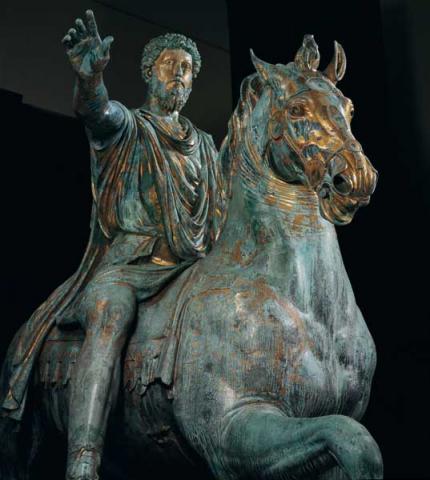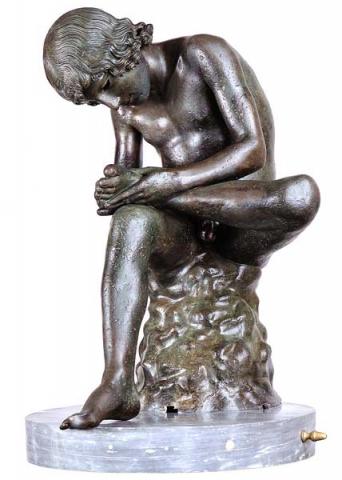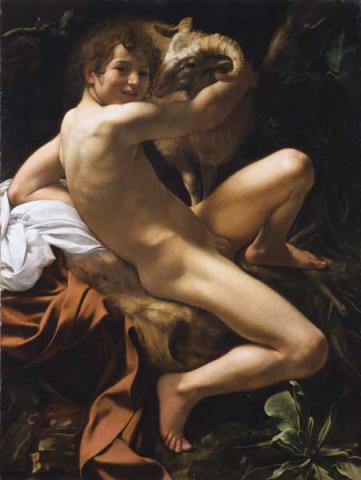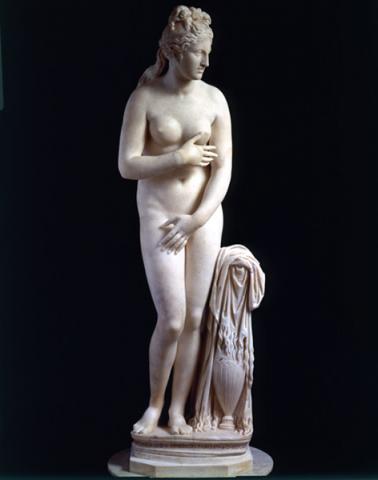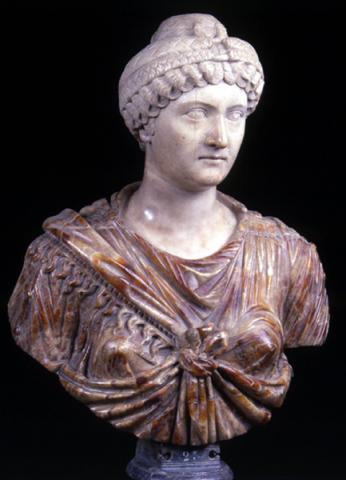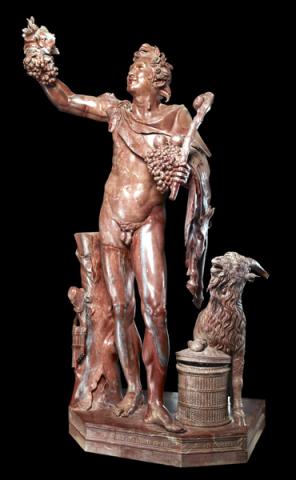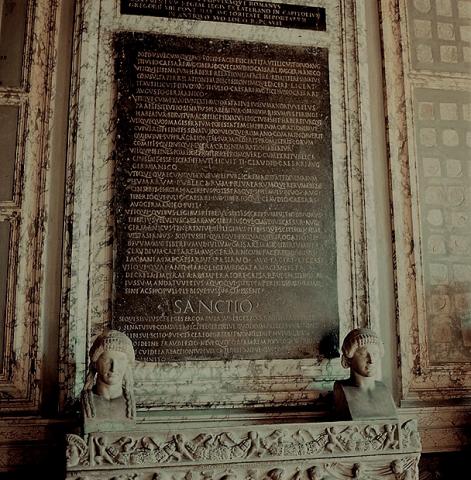Hall of the Faun
The Faun in ancient red marble which gives its name to this room comes from Hadrian's Villa.
The walls feature a series of inscriptions, including the famous bronze table with the Lex de imperio Vespasiani, with which the Senate authorised the transfer of power to the Emperor Vespasian in 69 AD.
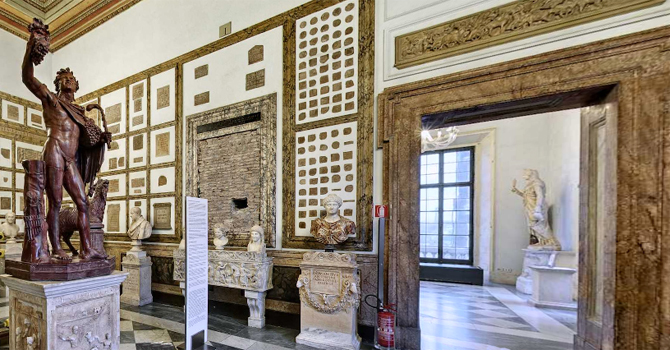
The splendid statue of the Faun in red marble in the center of the room comes from Villa Adriana as the two centaurs of the “Salone” ascribable to the same artistic environment, and was donated to the museum by Benedict XIV. The mythological character, distinguished by feral features, belongs to the Dionysian world and shows an indissoluble bond with wine, a gift of Dionysus to humanity, also underlined by the use of precious red marble.
In the evocative gatheriing of works that characterise this room we can point out:
- the statue of a child with a mask, a decorative work intended for the arrangement of fountains and nymphaeums, a Roman Age copy of a creation from the II-I century BC;
- the statue of a child choking a goose, attributed to Boethos, a sculptor of Rhodes, referable to the same environment and to the same period;
- the sarcophagus with the myth of Endymion, from the II-III century AD, found under the altar of the church of S. Eustachio.
Among the epigraphic texts on the walls, the Lex de Imperio Vespasiani stands out due to the extraordinary importance of the historical document, a large bronze table containing part of the text of the law which the Senate conferred power on the Emperor Vespasian (69 d. C .) with. In the Middle Ages it was at the Lateran where Cola di Rienzo read it and commented to the people, inflaming them in memory of the ancient greatness of Rome.


























